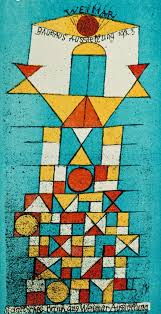Literary time collects in layers; our characters are superimposed within these folds. In order to successfully graft a realistic, that is to say relatable, cast of characters, we must be prepared to not only understand the matrix in which we desire to place them, but also be prepared to establish an environment which is capable of sustaining this transplant. The small details matter & whether unconsciously or by deliberate act of will, we sift through imaginary worlds to select what best juxtaposes.
Yet can we wisely rely upon the arbitrary function of imagination to craft various aspects required for a credible landscape of fiction? In order to move past the fluid lyricism of an undulating imagination, writers must freeze a particular aspect, then sculpt glorious details from that model into language. Like an artist drawing the human form, we require an example to assist imagination in filling in nuance.
For writers attempting to sculpt these elegant lines of graceful, lyrical fiction, identification of a central image serves to anchor the surrounding reality. Images which surface, then graduate to serve as these central pivots—the cohesion to which the conscious mind begins to explore beyond the hard-won details serving as access points for a reader’s imagination. This threshold is challenging to determine. Whether the writer chooses to interpret early imagery through a critical filter is certainly a matter of individual choice but in either option, the writer in possession of powerful symbolic imagery is a writer who now has something tangible to work from. With discipline & artful composition, this vocabulary leads into the next indelible scene; narrative texture begins to collect & sustain.
And so it goes—the story weaves outward & all the many hypothetical instances we apply to determine direction or relevance, find answers within this emerging world. Some of the original hunches were in check with what continues to emerge; some prove to be incongruous. This mysterious puzzle slowly reveals images & icons which collect thematically to broaden the scope of the narrative into the symbolic.
Can it be that Dr. Jung was correct when he reported his observations that within all of us, buried in the chaos of the unresolved Unconscious mind, there exists access to the archetypal? It is possible to freeze upon one of the pivotal images & begin to research historical & mythological significance of that unit. Through closer analysis, we might discover larger, more universal relevance to the work we are creating.
This type of scholarly exploration can be of use in determining continued direction. Should it? Once the activated imagination begins to sift through the archetypal, perhaps it is better to let this excavation continue intuitively, unfettered by the anxieties of a conscious mind? In taking this leap of faith, trusting the instincts we have cultivated as productive writers will not only satisfy the demands of a linear narrative, but also lead to the symbols which provide books the perspective & nuance of great writing.
Is it best to surrender imagination unlimited access? In accepting the inevitability of an overall coherence, we not only endeavour to tell a story with sophistication but we may also take steps toward greater personal awareness. In this way, our writing begins to shape a unique realism of what is possible through the mechanics of an illuminated creative mind.
{Images by Bauhaus}







No comments:
Post a Comment